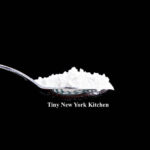More and more people are swapping starches for flour in their recipes. If this is something that you have thought about doing then read on to find out more about cornstarch and its uses.
Cornstarch is one of the most versatile starches that there is. Extracted from the starchy endosperm of corn, its white powdery substance is virtually flavorless. It’s a nice ingredient for thickening puddings, soups, pie fillings, and many baked goods recipes. When added to cake, cookie, and shortbread recipes, cornstarch helps create a crumbly and tender texture.
Commercially, cornstarch is often used as an anti-caking agent. When added to packaged goods like shredded cheese, cornstarch coats the cheese and helps to absorb moisture that would otherwise cause spoiling. The absorption process also helps prevent food from clumping over time. Additionally, it is used when making sugars, such as corn syrup.
When cooking with cornstarch, it is best to mix this ingredient into a recipe that is at room temperature. When cornstarch is added to too hot of a mixture, the heat can cause unwanted clumping. Before adding any starch to a recipe, it’s recommended first to make a slurry. To make a slurry, simply mix cornstarch with a cold liquid such as water. This mixture will create a paste-like substance, that you can then add to the desired recipe. Using this slurry method will ensure that the cornstarch is evenly distributed throughout the recipe and not broken down by the heat. It is not recommended to freeze sauce and soups that include cornstarch. Freeing cornstarch can cause the molecules in the starch to break down, and once thawed, the liquid will not hold the same texture as before.
For Thickening:
Cornstarch is often used as a thickening agent when added to soups, stews, and gravies. Denser than flour, less cornstarch is needed to thicken a liquid to the desired consistency.
When cornstarch is added to a recipe, the starch molecules work to absorb water and thicken the mixture. When heated, those molecules swell and consume even more of the liquid in the recipe. Upon thoroughly cooking, the starch in the mix will have expanded size to ten times its size. Once the mixture cools, these same molecules will set. The setting of these molecules can help further solidify the dough, which makes cornstarch a great thickening agent for gooey fillings like pies and pudding. However, this molecule expansion is limited. While a cornstarch enriched recipe can be brought close to boil, it should never be fully boiled. When cornstarch is exposed to too high of temperatures, the starch molecules will begin to deflate, and the mixture will return to its runny state.
For Baked Goods:
Cornstarch not only acts as a thickening agent, but it can also be used in baked goods like cookies, brownies, and cakes. If you’re looking for more structure in your favorite dessert recipe, then you may want to try using cornstarch. Combining cornstarch with other flours can help soften the rigid proteins of the flour, resulting in a light and chewy dessert. Similar to when adding cornstarch to a soup or pudding, if adding cornstarch to a dessert batter, it should first be turned into a slurry. This will ensure that all of the molecules remain intact and that the starch is evenly distributed. Upon adding cornstarch to your baked goods, evaluate it as you would a soup. Has your batter reached the desired consistency? If not, then a bit more cornstarch may be needed. Once your dough looks perfect, bake your dessert like usual. The result should be light, fluffy, and delicious desserts.
Anti-Caking Agent:
Have you ever wondered why your powder sugar ingredients include cornstarch? Cornstarch acts as an anti-caking agent. By keeping moisture and condensation from reaching whatever it is mixed with. It helps to prevent lumps in finely ground foods like sugar. Cornstarch isn’t just used to ward off moisture from sugar. The next time you’re in the grocery store take a look at how many products list cornstarch as an ingredient. From gravy granules to shredded cheese, you might be surprised by the wide variety of foods that cornstarch is added to.
Frying With Cornstarch:
Cornstarch can also be used as a coating for fried foods. While cornstarch shouldn’t be used as a substitute for flour in baked goods, you can very easily substitute it in for flours when coating fried chicken, fish, or other items you’re frying. Not only will cornstarch work in the same way that flours do, but it will hold up better against sauces and absorb less of the frying oil. Less oil means less fat in your meal.
When frying food with cornstarch, I recommend that you coat the items lightly. Applying a light even coat to your food will ensure that it results in a crispy texture. When too much cornstarch is added, the coating often turns out gummy rather than crunchy. For the perfect, gluten-free fried food, consider blending cornstarch with a gluten-free flour like almond flour. This will help create a more breaded result, similar to wheat flour.
©Tiny New York Kitchen © 2021 All Rights Reserved







